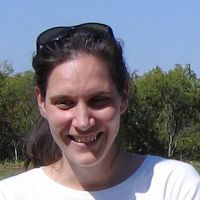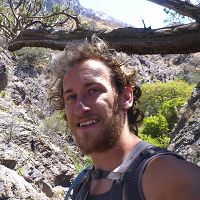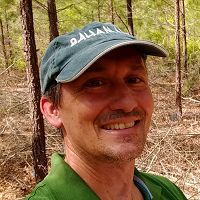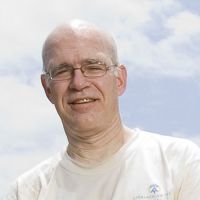Billings et al., 2018
Carbon isotopes reveal signals of the Anthropocene in soil carbon pools deep within the critical zone
Billings, S.A., Z.S. Brecheisen, A. Cherkinsky, C.W. Cook, C. Lehmeier, D. deB. Richter (2018)
American Geophysical Union 2018 Fall Meeting, Washington, DC, 10-14 Dec 2018
-
Calhoun, INVESTIGATOR
-
Calhoun, GRAD STUDENT
-
Calhoun, INVESTIGATOR
-
Calhoun, STAFF
-
Calhoun, INVESTIGATOR
-
Calhoun, INVESTIGATOR
Abstract
In 2003, Ruddiman hypothesized that humans began influencing Earth’s atmosphere when agriculture developed. A belowground analog, the Ruddiman-CZ hypothesis, states that conversion of deeply-rooted ecosystems to disturbed, cultivated systems can impart deep, persistent signals in soil water, gas and solute fluxes. To begin testing this idea, we investigate how C dynamics deep within the critical zone change with cultivation and subsequent forest regeneration. At the Calhoun Critical Zone Observatory (CCZO), we leverage radiocarbon (one date) and d13C signatures (year-round) of in situ CO2 to 5 m depth in frequently cultivated plots, ~80 y old pine forests regenerating on previously cultivated land, and mature hardwood forests that have never been plowed.
In both forests and two of the three cultivated soils, d13C-CO2 at 0.5 m was 3 to 4 per mille 13C-enriched compared to deeper horizons. On multiple dates, forested soils also exhibited 13C enrichment at 5 m relative to 3 m, where [CO2] was greatest. This d13C-CO2 depth dependence is consistent with isotopic theory, which predicts that 12C preferentially diffuses to regions of lower [CO2] concentrations. We did not observe differences in d13C-CO2 between forest types, but cultivated soils consistently exhibited 13C-enriched CO2, reflecting inputs of C4 biomass. Radiocarbon also exhibited depth trends: in all soils, 14C derived from mid-20th century nuclear bomb testing increased in prevalence in CO2 with depth. At 3 and 5 m, cultivated soil CO2 exhibited greater “bomb” C compared to both forest types, and mature forest CO2 exhibited lower D14C signatures than in regenerating forests, revealing more CO2 derived from recent photosynthate with increasing ecosystem maturity.
These datasets reveal 1) the great depths to which ecosystem productivity penetrates into the CZ; 2) how ~80 y of forest regeneration can mask d13C evidence of C4-derived CO2 in former cultivated fields; 3) that regenerating forests do not pump recent photosynthate deep into the profile to the same degree as mature forests; and 4) how joint use of stable carbon isotopes and radiocarbon of soil CO2 provides sensitive signals of biotic C inputs deep within Earth’s CZ. We highlight how human actions at Earth’s surface can be detected deep within the CZ even after many decades of ecosystem regeneration.
Citation
Billings, S.A., Z.S. Brecheisen, A. Cherkinsky, C.W. Cook, C. Lehmeier, D. deB. Richter (2018): Carbon isotopes reveal signals of the Anthropocene in soil carbon pools deep within the critical zone. American Geophysical Union 2018 Fall Meeting, Washington, DC, 10-14 Dec 2018.
 This Paper/Book acknowledges NSF CZO grant support.
This Paper/Book acknowledges NSF CZO grant support.
Explore Further






